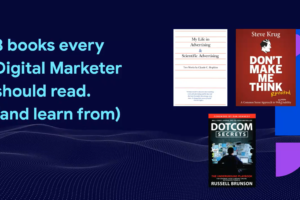Optimization is a marketing term that has become extremely popular in recent years. But what does it mean? For what is it used? Why do you need to know about it? In this article, we’ll cover everything you need to know about optimization and why it’s so important for your business.
We can all agree that digital marketing is an important part of any growth strategy—but are you using the right tactics to attract customers and grow your business?
Don’t worry, you are not alone. This is an area where a lot of companies struggle or even neglect.
Instead, they just post ads, hoping they will catch on—and never check to see what works and what doesn’t. Instead of taking this approach, you should monitor certain marketing elements that affect your success as a whole business.
By using a variety of marketing channels and tailoring each one carefully to your specific audience, you can easily find ways to improve your overall success.
This approach will help you create marketing campaigns that increase traffic, improve sales and attract engaged customers. Ready to get started? Here’s how…
What is Marketing optimization?
Optimization is the process of adjusting something to make it better. In marketing, it can be used to improve your website, ad copy, or landing pages so that they have a greater impact on your business goals.
Marketing optimization is a process of analyzing the performance of your marketing campaigns. It is simply the process of tracking each channel that your business utilizes and adjusting based on that data.
It helps you improve your marketing campaigns by measuring their effectiveness, adjusting to increase their success, and then continuing down this path until you get to an optimal level for your brand and business goals.
Why is marketing optimization important?
Just because…
It helps you to continue to see better responses and increased growth. It’s also vital for business success. Marketing optimization helps you understand your customers better so that you can deliver a more personalized experience that speaks to them on a personal level. This will definitely increase your conversions, which will also boost revenue. The sales team says thank you!
It is a cross-impact that marketing optimization gives you. It helps you understand your business better by identifying strengths and weaknesses for the company as a whole to grow more profitably over time. By understanding both sides of this equation—and how they impact one another—you can make strategic decisions about what changes need to be made to optimize each area individually before integrating them into one cohesive plan of action that works together seamlessly rather than against each other (which could lead things astray).
Finally, marketing optimization gives companies greater insight into their competition by helping them identify potential weaknesses or strengths within their own industry space as well as other markets outside theirs where they may be able to expand into later down the road if needed; again allowing them access knowledge about themselves that’s both useful for today but also tomorrow!
Why is Marketing Optimization Important for Businesses?
As an entrepreneur and a business owner, you want to make sure that your marketing efforts are profitable. Marketing optimization is all about making sure that the money you spend on marketing will bring in new customers and increase sales, period.
If we look at it from a bird’s eye view, there are two types of marketing: paid advertising (such as Google Ads, Bing Ads, Programmatic media, etc.) and organic content (blog posts, landing pages, SEO content, etc.). If we’re going to be successful with either type of content, we need to understand our audience first.
Marketing optimization helps us do just that—it helps us understand who our customers are so we can tailor our content and target ads toward them. It also gives us insight into what they like or dislike so we can create better products or services for them down the road.
How can I use marketing optimization?
Quick checklist:
- Business goals analysis
- Campaign settings
- Audience narrowing
- Keywords
- Bidding strategy
- Creative design
- Creative copy
- Website/LP design
- Website/LP Copy
- Briefing optimization
- Approval process optimization
- Meetings optimization
The optimization culture will ooze to all adjacent client areas as soon as the results start growing.
What do I need to start marketing optimization?
To start marketing optimization, you’ll need to make sure you have the right tools and processes in place.
Marketing Optimization Process:
The first step is to have your goals and objectives 100% clear throughout the organization – if possible, your vendors. It’s important to know what success looks like before you can set out on your journey. Once you have that, it’s time to decide what data points are most important for measuring whether those goals are being met. This can be broken down into four parts: acquisition, activation, retention/engagement, and referral/revenue growth (AARRR).
From there, develop hypotheses about how changes in each area will affect one another over time—and then test them using A/B tests or multivariate testing software such as Optimizely or your preferred tool.
Finally, measure results by comparing different versions against each other using conversion metrics like bounce rate or the percentage of users who completed a checkout process after visiting a page within “x” minutes of landing on the site without performing any actions beforehand; this should allow for better understanding about which elements work best together so they can be replicated across multiple channels down the line too!
Once you have those results in hand, it’s time to decide whether the initial hypothesis was correct. If it was, great—make sure you document what happened so that others can learn from it too. If not, then go back to the drawing board with your team and try again!
How do I know when to optimize my campaigns?
As you can see, there are several ways to optimize your campaigns. But how do you know when it’s a good idea to start?
Enhance: Well, that depends on the type of campaign you have and what your goals are. If you have an existing campaign and want to enhance it with new ideas or data, then optimization is probably the way to go.
Not getting results: Otherwise, if you’re not seeing the results from your campaigns that you’d like to see, then it’s time to optimize. It’s common for marketers to start with a basic campaign and then optimize it. This is because the more you know about your audience and what they want, the better you can tailor your message to them. So, if you don’t have any data on your customers (or not enough), then start by building out some simple campaigns first.
Needing more data: If you need more data, then try testing different audiences and ad creatives. One way to do this is by creating a custom audience for people who have already taken action on your website, such as signing up for email updates or purchasing a product.
However, before diving into optimization, it’s important that marketers understand their marketing strategy first so that they choose their starting point wisely—and this can be done in just about every case without question by following these guidelines:
– Ask yourself: What do you want the campaign to achieve? – Define the customer journey and identify all touchpoints.
– Figure out who your target audience is.
– Build a persona with specific characteristics, goals, and values.
Important: You need to be really careful when analyzing the impact of optimization in your campaigns. On one hand, you will analyze the individual impact of each channel in your conversion rates, you might be using “last touch attribution” analysis. It is a great thermometer to understand budget allocation and channel performance. However, there is a major challenge that many marketing teams face, which is the “multitouch attribution” analysis, which analyses and distributes weighted credit according to each channel participation in each conversion.
So, don’t be convinced only by the last touch, you might be missing the bigger picture, or need to dig deeper and find out what is the real impact of each channel on your conversion rates.
I will write an article explaining the various types of attribution and how they work.
Do I need a marketing plan or a marketing audit first?
The answer to this question depends on the size of your organization and the complexity of your marketing efforts. A marketing audit is a good first step to determine your current state, but it won’t tell you what needs to be done or how much time it will take. A formalized plan can help you set goals and prioritize the actions needed to achieve them—and therefore help with budgeting as well.
A formalized plan should include:
- The objectives for each stage (e.g., registration, lead generation) in the sales cycle.
- How many leads per month/year are needed? What type of leads do we want; e.g., qualified vs non-qualified inquiries? Do these vary across channels or products/services offered by our company? If so why does this matter now; e.g., are there seasonal trends that cause us not to be able to meet our target quantity at certain times due to lack of resources available during those periods (like holiday seasons)? What types of campaigns work best when compared against others based on past performance history versus other companies doing similar work here locally too?
Should I outsource marketing optimization?
Outsourcing is a good option if you don’t have the time or resources to optimize your own campaigns. It’s also a good idea if you don’t have an in-house team that can do the work.
When deciding whether to outsource your marketing optimization, it’s important to consider these factors:
- When you’re outsourcing, make sure you stay up to date on what’s happening so that you can respond in real time; otherwise, it might be too late by the time someone from outside takes action.
- The cost of hiring an internal team vs outsourcing will help determine what works best for your business structure. For example, some companies may want employees who are able to work across multiple departments at once (e.g., sales, marketing). This could prevent them from having trouble finding qualified candidates who know how all aspects of an organization should interact with one another effectively over time.
My website has lots of traffic. Isn’t that enough?
Ask yourself the following questions:
- Do I know what are the main pages that users land from organic traffic, social, email?
- Do I know the overall conversion rate of my website?
- What is the conversion rate of my website per channel? Per creative? Per audience? Per audience, per creative?
The more you dig the more you discover, it is exactly like gold. Data.
So, although your website likely gets traffic, you still need to know how to convert visitors into leads or sales. If you don’t know what metrics will help with this process—or how those statistics are calculated—you might run the risk of wasting time and money on ineffective advertising methods.
Again, take your buddy data to dinner and get along with it. You need each other, more than ever.
Where can I learn more about digital marketing optimization and best practices?
- Google Analytics
- Google Ads
- Google Tag Manager
- Google Search Console
- Google Ads
- Google Trends
- Google Optimize (formerly VWO)
- Keyword Planner (formerly Keyword Tool)
- Facebook Ads and Insights
- Adobe Analytics
With the wealth of resources available to you, it’s clear that there are many ways for you to improve your digital marketing optimization strategy. In fact, even if some strategies seem new and unfamiliar, don’t worry—there is always a solution.
The key is to keep an open mind and not be afraid to try new things. If you’re not sure where to start, consider hiring a digital marketing agency that can help guide you through the process.
The real question is whether or not you’re willing to take the time and effort to implement them. If you’re ready to start optimizing your site for better performance, then send me a message and let’s chat.
Marketing optimization makes your marketing effort efficient and effective.
While it may seem like “the more, the merrier” when it comes to marketing efforts, this is not always true. Marketing optimization helps you reach your target audience in a sustainable way by eliminating wasteful spending and improving efficiency for all campaigns.
In addition to saving money and time, marketing optimization allows you to improve your website. The better optimized your site is for search engines, the higher up Google’s rankings will be. If your site ranks high enough on Google’s SERPs (search engine results pages), then more people will visit it – which leads us straight back to our first point: reaching more customers organically leads to better conversions!
When you start doing it right, the growth is exponential. With the same budget, you can increase your goals using the exact same channels. Imagine every optimization you make, multiplying your campaign results. In the end of an optimization period, how overwhelming your results will be.
The continuous marketing optimization practice will improve your business processes.
Marketing Optimization is a continuous process. It’s not just about measuring how well your marketing experiments are working, it’s about identifying areas of improvement and setting goals for your campaigns before you start testing them.
It’s important that you have some idea of what success looks like before you begin testing out new tactics, or else it will be difficult to tell if your efforts were effective at improving conversions or sales. This allows you to set realistic expectations and events so that when they’re met (or not), they’re meaningful enough as feedback points in the next round of experimentation. The best practices in marketing optimization include:
Identifying areas of improvement – Without an objective goal in mind, there is no way to know whether or not one campaign was better than another or if both performed equally poorly over time. That being said though, setting goals too high can also lead down a dark path where disappointment sets in later on because results don’t match expectations… so try not use metrics like “double sales” unless there’s solid evidence supporting such large increases (like data from previous years).
Each implementation is a small victory; you increase 10% in one channel, 20% in another channel, 50% in SEO, and you will then realize that you need to improve your business process to follow along with your optimization strategy. Over time, your team will be facing big changes in the way you work thanks to the initiative of starting an optimization strategy and making it become an optimization mindset.
Wrapping up: Optimizing your marketing campaigns is an essential step to take if you want to succeed.
The marketing optimization process is complex and always evolving.
Marketing Optimization is one of the most effective ways to drive more traffic and sales to your business, but it’s also one of the most difficult processes to manage.
Through all of the tactics that you use, you should always be able to monitor certain factors that affect your overall success as a business. This can help you with each individual channel, where you can tweak and update according to what is working best with your audience. Although this may seem like a lot of work at first, it will actually save you significant time in the long run.
Instead of hoping your ads will catch on, don’t you think it would be better if you knew exactly how to get the best performance out of each marketing channel? As long as there is a clear connection between metrics and results, optimization has shown that companies can save time, money, and energy.


![Deconstructing to [re]Construct Illustration by Pietro Botelho](https://digitalasitis.com/wp-content/uploads/2022/11/1593435939368-300x200.jpeg)






